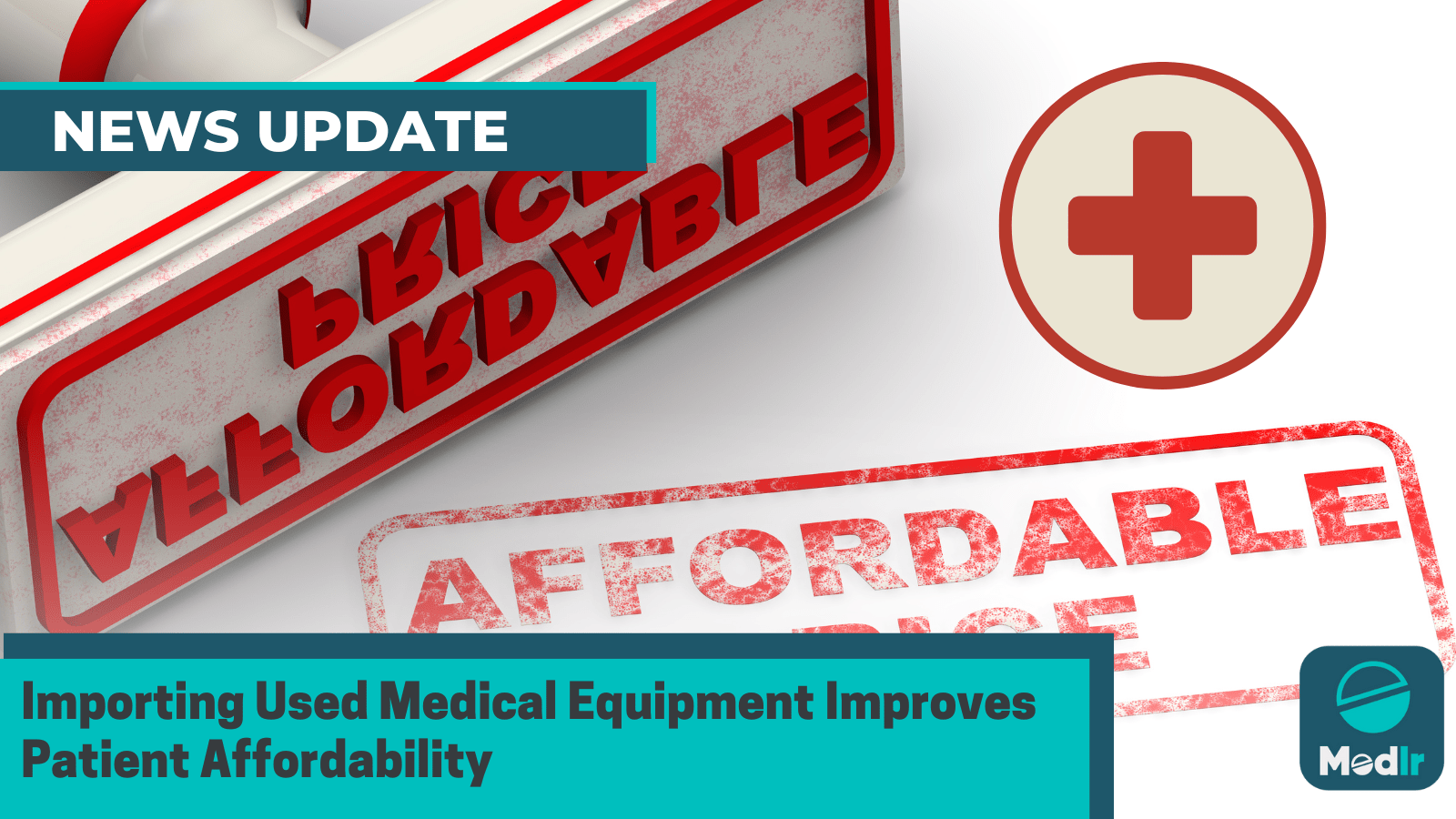Importing Used Medical Equipment Improves Patient Affordability
Written by Arushi Sharma, Jaskiran Walia
Importing used medical equipment can significantly enhance patient affordability and accessibility to healthcare services.

MoEFCC's approval for importing pre-owned medical equipment could improve access and affordability in tier 2 and 3 cities, benefiting hospitals with complex items like CT scans, MRI, surgical systems, X-rays, and endoscopes. This would make these items more accessible and affordable.
Key nations, including the USA, Europe, Japan, UK, Canada, South Korea, New Zealand, and Australia, permit import and sale of regulated pre-owned medical equipment. MTaI addresses industry concerns with factual arguments.
Pavan Choudary, Chairman, MTaI said -
“Two points made by domestic industry leaders rhetorically hijack the debate and make it difficult for one to argue his case unselfconsciously.
The import of pre-owned medical equipment contradicts the PM's vision, as industry leaders may not fully understand it. With a 9-year tenure and extensive exposure, it's possible that the PM's policies favoring certain groups may be mistaken for the entire policy.
Recently when a minister threatened a journalist by brandishing her connection with his media owner, the media industry uproared in protest against this intimidation. Aren’t the industry leaders who are pillorying this policy by calling it against the Prime Minister’s vision guilty of the similar arm twisting of bureaucrats and politicians. MTaI humbly protests against arm twisting of any kind, from any quarter. In this case, such propaganda can distort policy making & derail progress and should be called out. And we are doing so. Dignity always doesn’t lie in silence.”
Clarifying MTaI’s position on import of pre-owned medical equipment, Choudary says, "MTaI distinguishes between import substitution from import replacement."
How are the Import Substitution and Import Replacement Different?
Import substitution is government-backed and sponsored by raising tariffs and non-tariff barriers, often with subsidies. This can negatively impact competitiveness and efficiency. Import replacement, on the other hand, is more organic, as seen in Japan where bicycle repair shops began repairing imported bicycles, then producing spare parts and bicycles themselves. This ecosystem led to giants like Honda and Toyota rising. Import replacement also leads to job booms in cities and villages, as demand for new raw materials increases.
The Prime Minister, Health Minister, and Environment and Forest Minister are working on a MedTech policy that utilizes domestic and international currents to optimize the sector's growth. India, with 15% of the world's population but only 5% of wealth and technology, is a capital-intensive and technology-intensive sector. The West and Japan, with 15% of the world's population but 70% of wealth and technology, have a similar experience and investment data, supporting this direction.
“To fathom the government’s thinking, it is also necessary to observe its actions in contiguous areas, e.g., repairs of electronics. The Indian government’s wish to make India a global electronics-repair hub is evident from the efforts undertaken to catapult the electronics repair services outsourcing (ERSO) industry.
A landmark pilot with India’s top repair-service operators is underway in Bangalore to conclude in August. If successful, it could lead the way to a national repair-outsourcing policy, opening up a $20-billion opportunity, raising millions in tax revenues and creating up to 5 million jobs across profiles such as engineers, repair technicians, management staff, and others.”
Choudary further adds -
“A nation’s policy is a mosaic. The PM and his team’s moves suggest a wholistic advance. By opposing their moves in one area we could inadvertently cripple their momentum in another. Use of pre-owned medical equipment fulfils a patient need, a provider need, a government need (of extending quality healthcare to tier 2 and tier 3 cities) and provides a skilling opportunity in the secities. It can even catalyse the evolution of the industry. It should not be seen disjointedly but as one more move on the commercial chessboard for the advance of India.”
Choudary concludes -
“I have heard many a businessman say: Mr Modi’s thinking starts where our thinking exhausts. I find this comment somewhat cryptic. Less generous in complimenting the PM and over-estimating of the speaker’s own capacity to see. I would like to say that the PM’s exposure and scholarship is increasing the distance between our finish line and his start line. Faasla badhta ja raha hai.”